In the process of repair work, quite often there is a need to dismantle ...
|
|
The construction industry offers a huge selection of insulation that differs in ... |
The shed is necessary both in the territory of a private house and a summer cottage. It allows ... |
DIY garage insulation: tips and recommendations
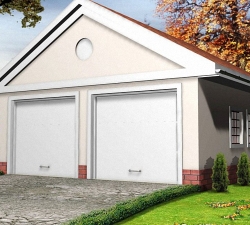
Although the garage is not a living room, it also needs insulation. This is especially true for unheated garages. Warming is necessary primarily in order for the machine, being in the garage in winter, it functions normally. In addition, if necessary, spending time in the garage in winter, it is much more pleasant to be in the insulated room. We will consider the varieties of materials for insulation of the garage and the technology of their installation further.
Table of contents:
- Reasons for garage insulation
- DIY garage
- Garage insulation from the inside and outside: Materials
- Garage roof insulation technology
- DIY metal garage insulation
- Polystyrene foam - garage insulation with your own hands
Reasons for garage insulation
Most often, in the process of building garages, sufficiently thin walls are equipped. This allows you to save consumables. The metal garage is completely thin the walls and in order to heat it in winter, it is necessary to spend a lot of time and electricity.
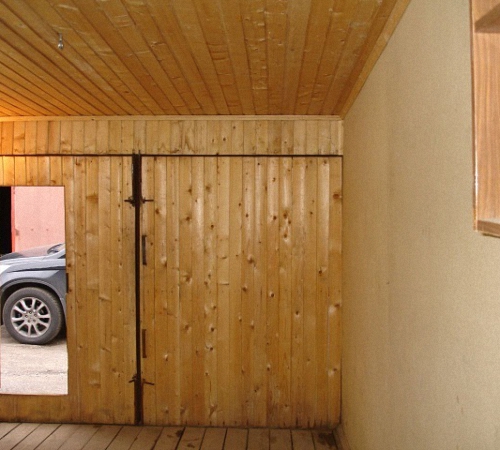
Therefore, in order for you and your car to be comfortable in the garage in winter, you need to think about its insulation. There are certain requirements for the temperature regime of car storage in the winter season. The minimum temperature of the garage room should be five degrees of heat.
It is almost impossible to achieve such a temperature in metal garages without insulation. In addition, in the room there must be a ventilation system that supplies the room with fresh air from the street. Therefore, the air in the garage is constantly updated. If you do not take care of insulation of the garage, but simply heat it. It will be possible to achieve a greenhouse effect that gradually destroys the car. For example, if in the garage room the temperature in the winter is +15 degrees, then constantly the air gradually cools the car and condensate masses form on it. They accelerate the premature corrosion of the car.
The ventilation system is a very important link in the normal functioning of the garage. If you fill up the ventilation hole in the garage, then a carbon monoxide can accumulate in the room, and there is also a risk of mold and fungus on the walls of the garage.
Therefore, in order for a healthy microclimate in the garage room, it is necessary to take care of its insulation. Thus, the life of your car also increases.
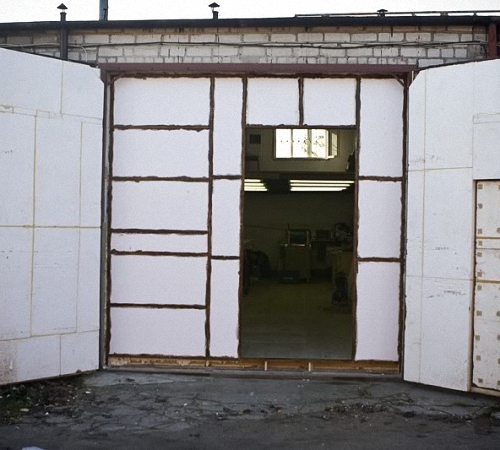
DIY garage
There are a huge number of materials with which you can insulate the garage. They differ primarily in thermal conduction. So, comparing a slag block and polystyrene foam, you can make sure that the first is 15-17 times faster passes heat than the second. That is, one wall from a cinder block, 100 cm thick, is vied in thermal conductivity of a 5 centimeter layer of polystyrene foam.
Another important characteristic is thermal inertia. It indicates a change in the temperature in the room after a certain time. That is, the wall from the cinder block will give heat or cold slower than polystyrene foam. It will take more time to heat the massive wall than to heat the coating from the insulation.
In order to ensure high -quality insulation of the garage room, it is necessary to achieve an increase in thermal inertia and a decrease in thermal conduction. Before choosing a garage insulation, it is necessary to study the physical processes of air movement in it.
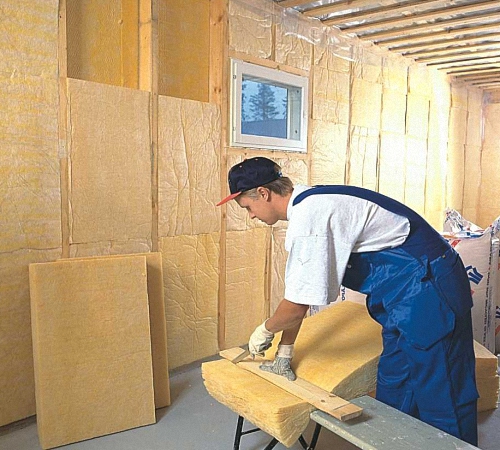
There are three methods of heat. We offer to familiarize themselves with them:
- convection is the process of transporting thermal air into the room, due to which the temperature in it increases;
- Thermal gear is considered to be the process of heat transfer from one warmer object to another;
- Thermal radiation is the process of heat release without transferring it to the air.
The most optimal option is the use of combined insulation. Using the use of standard insulation, it is possible to prevent thermal gear and the convention, and reflective heat insulators do not release heat from the room. This option of insulation is appropriate if the garage is located next to the house, that is, it is built into it. Otherwise, it will be irrelevant.
In any case, warming the garage, you should approach this process comprehensively. Since the presence of non -insulated areas will lead to an increase in thermal losses, and will not be able to support the necessary level of temperature regime. That is, insulating only the walls, heat will go through the surface of the gate and ceiling.
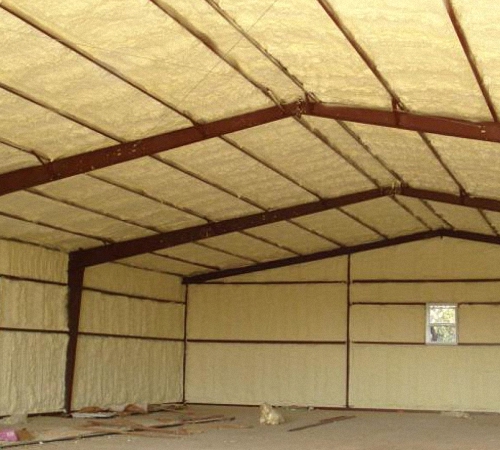
Garage insulation from the inside and outside: Materials
To insulate a separate garage, it is enough to use materials that prevent convection and thermal gear. Among the main heater we can distinguish such groups:
- polymer -based insulation;
- insulation of mineral -free origin;
- Fiberglass -based insulation.
The main quality of each insulation used is water resistance. In addition, it should be:
- environmentally friendly and harmless;
- not eaten for rats and rodents;
- fireproof and not prone to ignition;
- convenient in the installation process;
- inexpensive;
- stable before mold and fungus;
- have low thermal conduction.
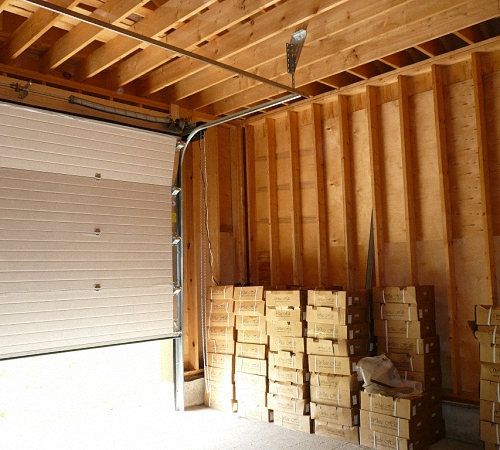
One of the most popular materials for garage insulation is mineral wool. This version of the insulation has all the above characteristics, except for water resistance. Therefore, its laying is accompanied by the need to equip additional waterproofing. In addition, this material has a fairly high cost. However, the duration of its operation and technical characteristics compensate for these shortcomings.
Glaud - similar to mineral wool, but has a more affordable cost. To work with such a material, you need to purchase a special suit, respirator and protective glasses, since the smallest particles of glass show off, can cause irritation. Glaud is resistant to high temperature.
Garage insulation with polystyrene is the cheapest option. The insulation is easily installed, characterized by an affordable cost and provides reliable thermal insulation. However, its shortcomings should also be indicated, such as:
- instability before moisture;
- the need for additional wall decoration after its installation;
- instability in front of rodents;
- low fire safety level;
- This insulation accumulates moisture in itself.
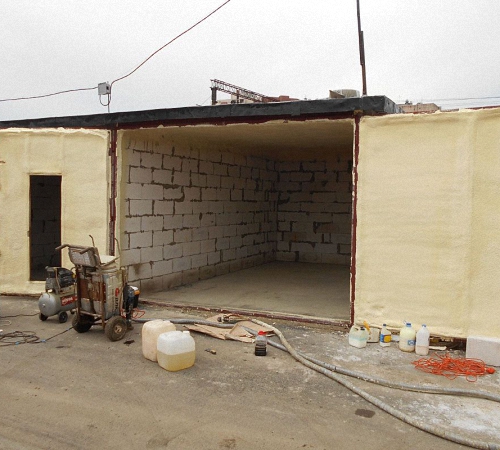
A non -combustible version of the foam is distinguished, which is recommended to be used in the process of insulation of the garage. This material is very light and does not load the walls, is easily and quickly mounted, is not amenable to decay and is characterized by an affordable cost.
Another option for insulation is basalt wool, which is a variety of mineral. This option has low thermal conductivity and good sound absorption. However, it also needs to arrange additional waterproofing.
Garage roof insulation technology
Before moving directly to the warming of the ceiling, we offer to familiarize yourself with the materials used in this process:
1. Garage insulation with polystyrene: for the production of this material, a foamed plastic is used. Most often it has the shape of sheets, differs in density. In the future, after insulation, the ceiling is putty or plastered.
2. Foamyplex is an extruded polystyrene foam, plastic is also used for its production. Sheets have a rectangular shape and chamfer. Thermal insulation characteristics of this material are an order of magnitude higher than that of the foam. It is not amenable to mechanical influences and has a greater density.
3. Mineral wool - its properties were mentioned above. However, for the ceiling, a foil coating on one side is most often used. Thus, it is possible to reflect heat and save it in the room.
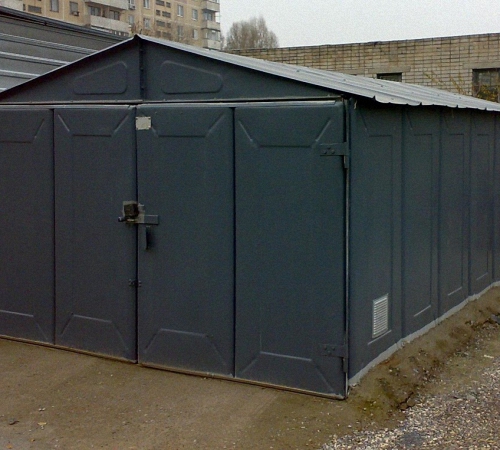
4. Expanded clay - for the manufacture of material, light -melting clay is used. It is used to warm the garage from the inside with your own hands in the attic.
The first option of insulation involves the presence of an attic in the garage. In this case, the previously selected version of the insulation is laid on the floor in the attic. The best option for insulation is to fill the floor with expanded clay, about 25 cm thick. Next, a screed is equipped on the floor. However, in this case, it is necessary to provide the insulation of proper waterproofing. This is especially true for expanded clay, which very easily absorbs moisture.
If there is no attic in the garage, then its ceiling is insulated from the inside. To install polystyrene or extruded polystyrene foam, it is enough to use a special glue and glue them on the ceiling in the room. Next, the surface is covered with putty or plaster solution and polished.
Possible option for finishing the ceiling using PVC panels. In order to improve the thermal insulation properties of the insulation under it, roofing or peramin is laid.
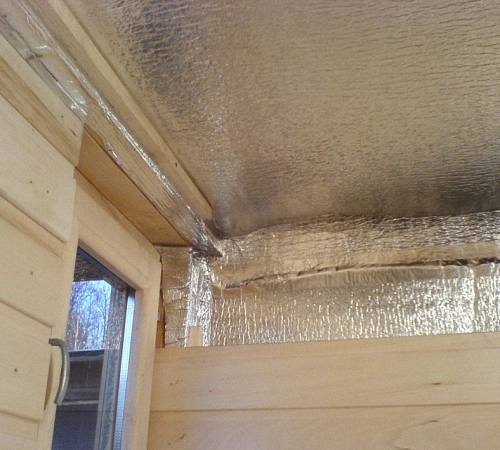
DIY metal garage insulation
We offer to familiarize yourself with the features of insulation of the metal garage with foam. If the insulation is carried out outside the room, the presence of a heater with a thickness of about 2 cm is required. In order to insulate a metal garage, perform a number of actions:
1. Using a wooden beam, equip a crate on the walls of the garage.
2. Install the foam on the wall using glue. Foam is fixed using liquid nails.
3. Start the installation of foam from below, gradually moving to the top of the wall.
4. For uniform distribution of glue on the surface of the plates, use a toothy spatula.
5. Install the second layer of foam. Try to ensure that the joints between the plates do not match. Thus, it will be possible to increase the effectiveness of insulation.
6. Further work is related to wall decoration using plaster, plastic plates or siding.
7. Keep in mind that the polystyrene is distinguished by instability before moisture, so the plates should be reliably protected from its effects. The most optimal option is wall decoration using plaster with additional fiberglass reinforcement.
Next, the garage gates should be insulated. They should also install a crate from a wooden beam. Install the foam using special glue. For gluing joints, a special tape isonon is used. It will help improve the quality of insulation and prevent additional thermal losses. After that, the gates are finished with suitable finishing materials.
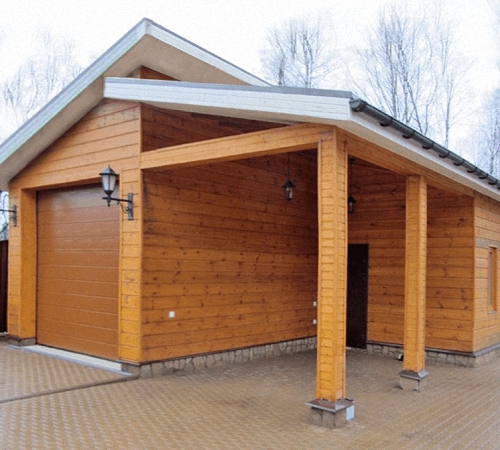
In addition, some owners of garages also insulate the floor. This is necessary if there is no basement in the garage. The process of insulation is as follows:
- deepen the floor in the garage by 25 cm and align it;
- Pour the base on 10 m gravel and 5 cm with sand, compact well;
- Pour the surface with a bitumen solution;
- Next, equip a concrete screed on the floor and strengthen it with reinforcement.
Polystyrene foam - garage insulation with your own hands
Polistyle foam is a rather popular material for garage insulation. For its manufacture, emulsion polystyrene with the addition of a foamer is used. In the ratio with the technology of manufacturing polystyrene foam, it is possible to obtain a material of a stopped, unopulated or extrusion type.
It is preferable to choose the insulation to dwell on the non -combustible version. In such a polystyrene foam, there is a special antipyren, which makes it non -oiling and not supporting burning. Among the advantages of this type of insulation, we note:
- resistance to water and steam penetration;
- low thermal conduction;
- ease of installation;
- affordable cost;
- Resistance before chemical and biological effects.

There are two options for insulation: external and internal. The first option is used more often, however, if finishing work outside the premises are already completed, it is recommended to insulate the garage from the inside. Internal insulation helps to reduce the beneficial area in the room. Therefore, materials for its implementation should differ in low thermal conductivity and small thickness.
Polistyle foam, which is used in internal insulation should be non -combustible, since inside the garage there is a large number of easily ignited substances.
The process of insulation begins with the installation of the crate and fixation of the foam on the walls. For these purposes, we recommend using both glue and special fungal dowels. Next, you should finish the walls. It is preferable to cover them with putty with additional reinforcement. In the event that the walls are trimmed with lining or siding, it is necessary to ensure proper waterproofing of polystyrene foam.
Warming of the garage video:
